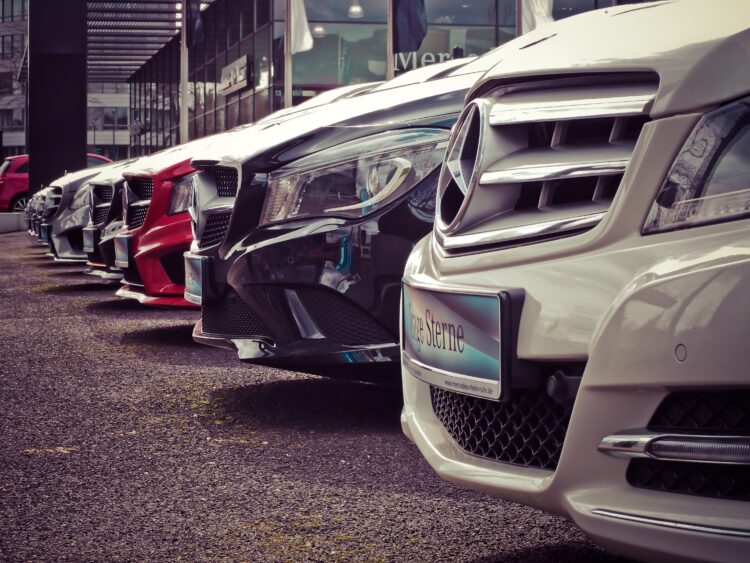Dive into the fascinating world of automobiles as we unravel the intricate language of the automotive industry with our A-Z glossary.
A
Adaptive cruise control
An advanced cruise control system that maintains a preset distance or time interval from the vehicle ahead by automatically controlling the brakes and throttle.
Adaptive headlights
Headlights that steer in the direction of the front wheels are turned to improve visibility when going around corners.
All-wheel drive (AWD)
A permanent, four-wheel drive system designed for improved traction on all surfaces and at all times. The main difference between AWD and 4WD systems is that the driver cannot disengage AWD.
B
Backfire
Gunshot-like sound from the engine air intake or tailpipe.
Battery acid (electrolyte)
Battery acid is the fluid in automotive batteries, a mixture of sulfuric acid and water.
Brake Assist
An ADAS system that automatically applies full braking power when it detects that the driver is executing a panic stop.
C
Camshaft
A machined shaft with eccentric lobes that are used to open the valves in the cylinder head.
Chassis (undercarriage)
The vehicle frame carries all suspension and power train components. Trucks still use a frame that is separate from the body, but virtually all modern passenger cars use unibody construction in which the body itself serves as the main chassis member.
Curb weight
The weight of a vehicle carrying a full tank of fuel but no passengers or cargo.
D
Daytime Running Lights (DRL)
Front lighting is designed to operate during daylight hours to improve a vehicle’s visibility to other drivers. DRLs may be normal-intensity headlights, reduced-intensity headlights, or separate lighting assemblies that may include LED arrays.
Disc brake
Brake design in which brake pads press against a disc (commonly called the brake rotor) to slow or stop the vehicle.
Drum brake
Brake design in which brake shoes press against the inside of a cylindrical drum to slow or stop the vehicle.
E
Electrolyte (battery acid)
The electrolyte is a fluid in automotive batteries, a mixture of sulfuric acid and water.
F
Fast idle
An increased idle speed that typically occurs for a short time after a cold engine starts to improve drivability and speed engine warm up.
Four-wheel drive (4WD or 4X4)
A part-time system that powers all four wheels for improved traction during adverse road conditions and off-road use. Four-wheel drive systems differ from all-wheel drive (AWD) systems in two ways: they can be disengaged when not in use, and they are not suitable for use on dry pavement.
Front-wheel drive (FWD)
A drive system that provides power to only the front wheels of the vehicle. Front-wheel drive systems incorporate a differential into a transmission, creating a transaxle. A transaxle can be an automatic or manual shift.
G
Gasoline Direct Injection (GDI)
A fuel delivery system that injects gasoline under extremely high pressure directly into the engine combustion chamber. This technology generates more power with better fuel economy and lower emissions.
Grab
Brakes engage suddenly and strongly, even when applying light pressure on the brake pedal.
H
Hesitation
Momentary loss of power on acceleration.
Horsepower
The measurement of the engine’s ability to produce work.
I
Intermittent
A problem that comes and goes with no obvious pattern.
K
Knocking (detonation, pinging)
Rapid, uncontrolled combustion of the air-fuel mixture in the cylinder that results in a hard, rattling sound. Detonation can cause severe engine damage if left unchecked for long.
L
Lane departure warning
An ADAS system that monitors lane markings and provides the driver with visual, audible, and/or tactile alerts if their car begins to leave its lane and the turn signal is not on.
Liquefied Petroleum Gas (LPG)
Liquefied petroleum gas, also called propane, is a combustible byproduct of natural gas processing and crude oil refining. LPG has been employed as a motor fuel for over 90 years, and outside the U.S. it often goes by the name “autogas.”
M
Master cylinder (brake master cylinder)
Master cylinders are used on braking systems to turn the mechanical power that is provided when you step on the brake pedal into the hydraulic power that is needed to apply the brakes and slow or stop the vehicle. The brake master cylinder is where the brake fluid reservoir is located on most vehicles. The reservoir stores the fluid until it is needed.
Misfire (miss)
The failure of the fuel charge in one or more engine cylinders to ignite at the proper time.
P
Park Assist
A system of ultrasonic sensors on the front and/or rear bumpers that provide the driver with visual, audible, and/or tactile alerts as their vehicle approaches a stationary object.
Pull
Vehicle self-steers to one side or the other when driving or braking.
R
Rear-wheel drive (4X2)
A drive system that provides power to only the rear wheels of the vehicle. In trucks, this type of powertrain is sometimes referred to as “4X2” in comparison to a four-wheel drive “4X4” system.
Rough idle
When the engine vibrates or shakes while running with the driver’s foot off the gas.
S
Shimmy
Side-to-side shaking in the suspension or steering.
Sluggish
The vehicle does not accelerate smoothly or with authority.
Surge
The engine speeds up and slows down with no change in accelerator position or brake application by the driver.
Suspension
The combination of tires, wheels, hubs, spindles, control arms, springs, struts, shock absorbers, and related parts that support the chassis and body as the vehicle moves down the road.
T
Telematics
The wireless transmission of useful information to and from a vehicle.
Thermostat
A component that helps regulate engine temperature by controlling the speed at which coolant circulates through the engine.
Torque
The twisting force produced by the engine.
U
Undercarriage (chassis)
The vehicle frame carries all suspension and power train components. Trucks still use a frame that is separate from the body, but virtually all modern passenger cars use unibody construction in which the body itself serves as the main chassis member.





